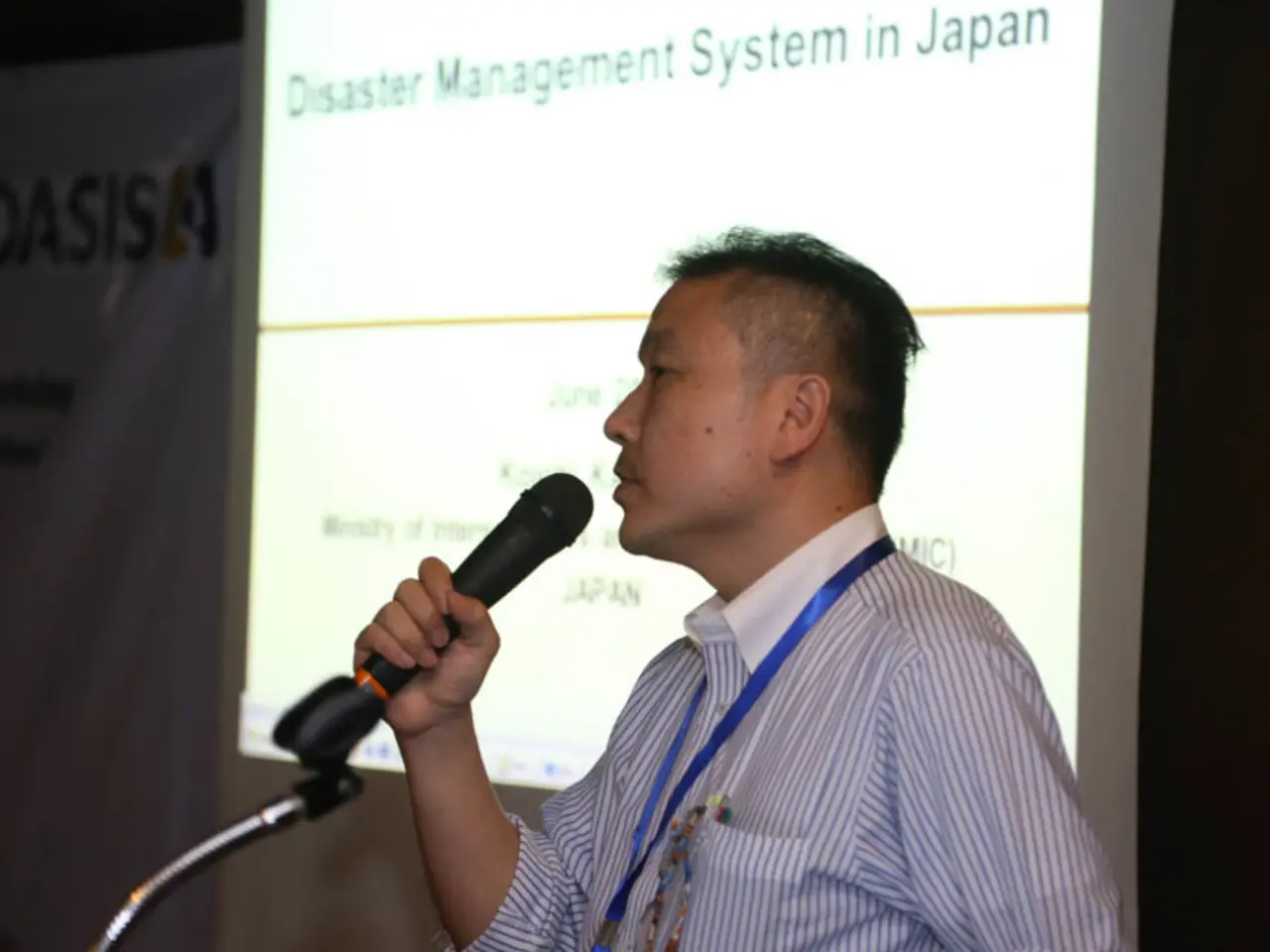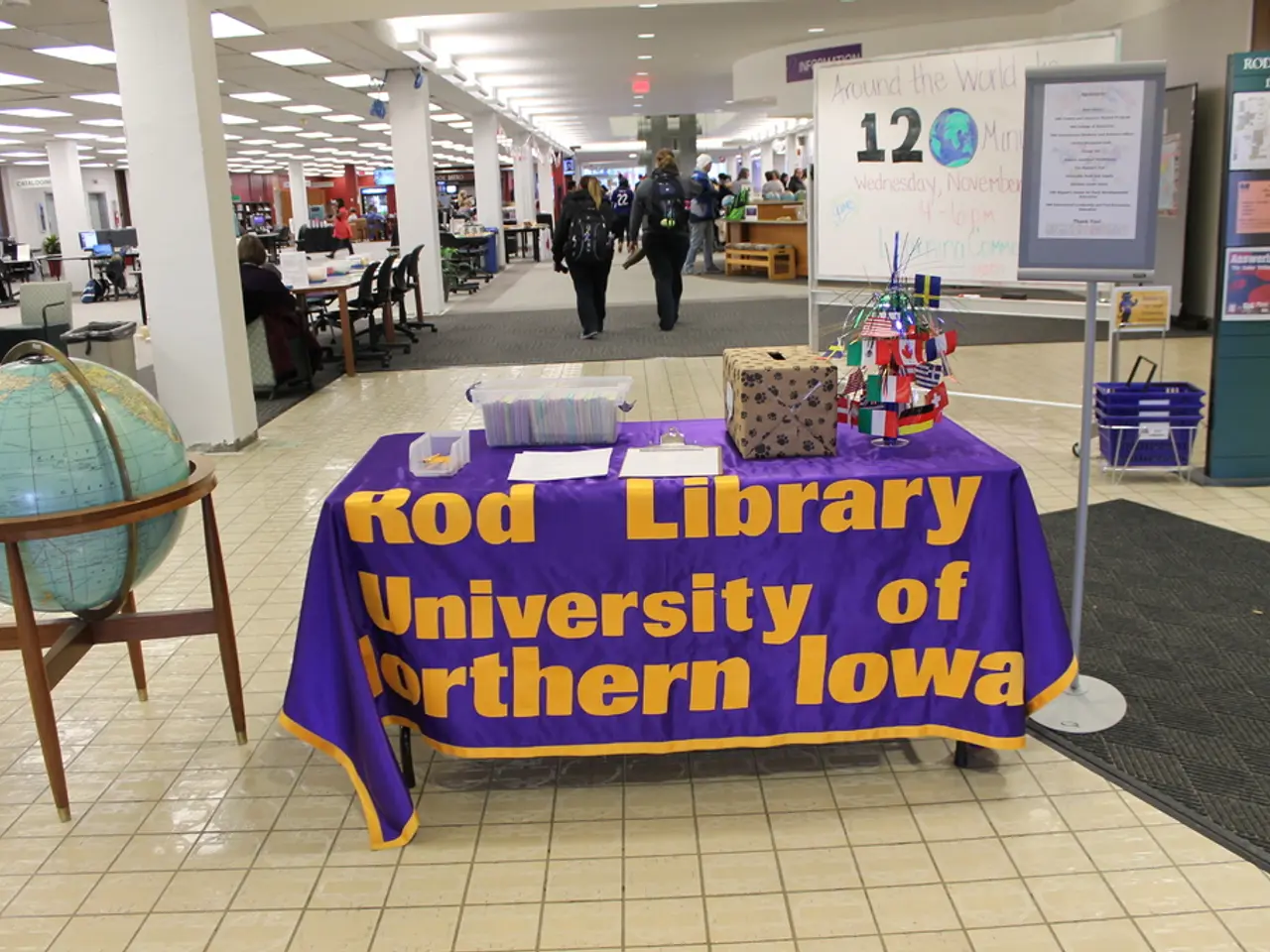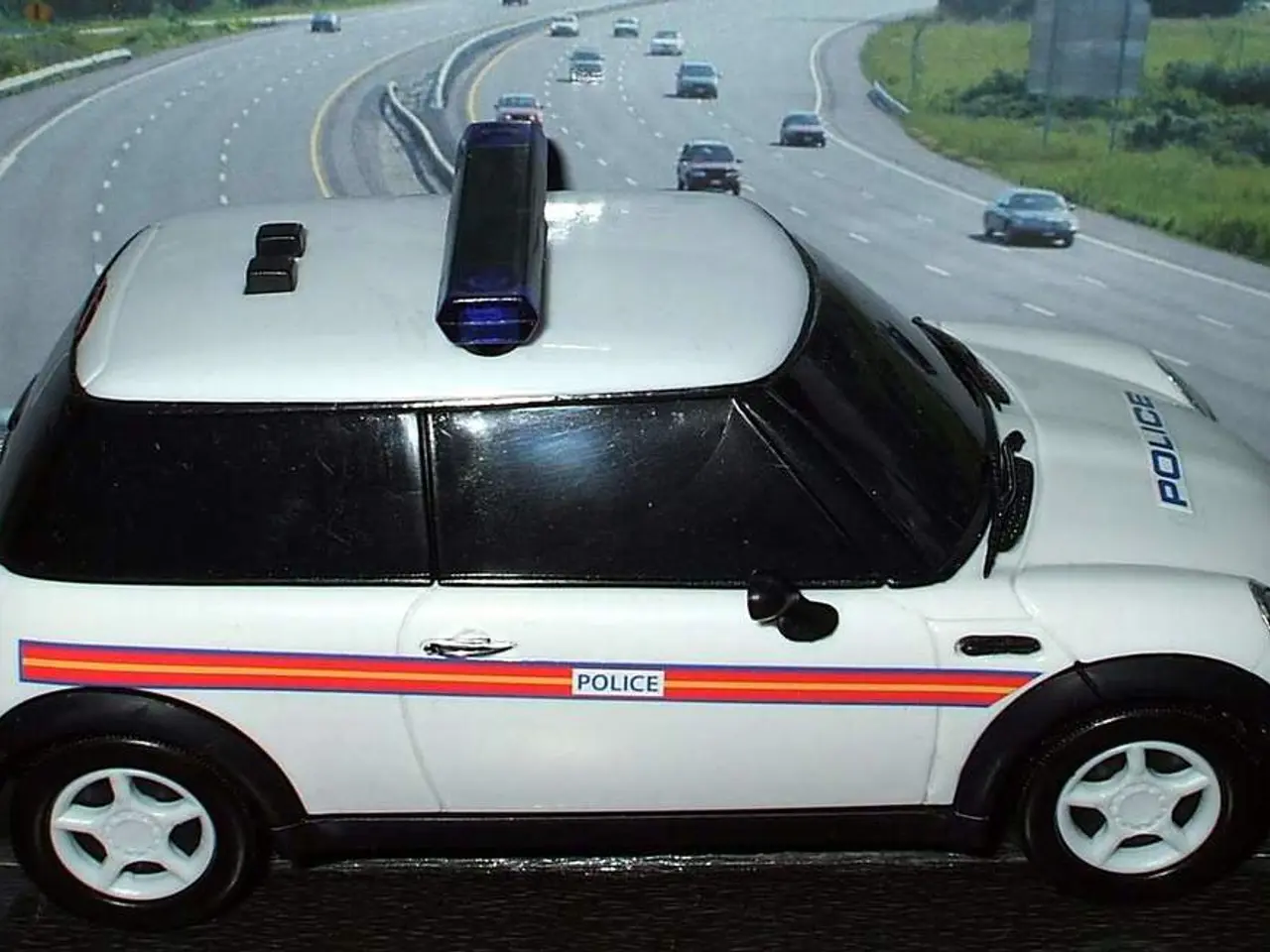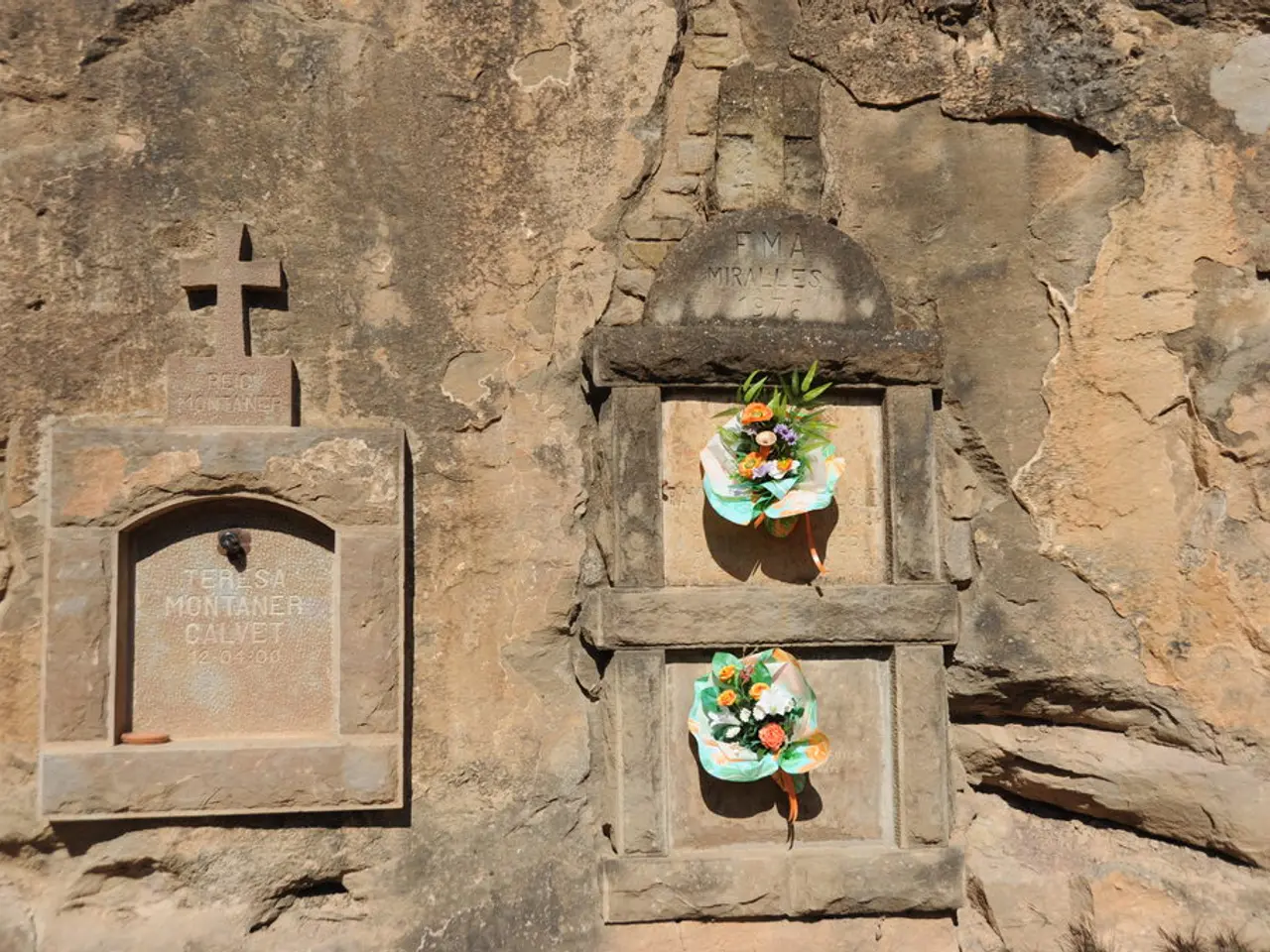Earthquake Triggers Tsunami Alert in the Pacific Region
In a series of events that have sent shockwaves across the Pacific, an 8.8 magnitude earthquake struck off the Russian peninsula of Kamchatka on July 29, 2025 [1][2][3][4]. This seismic event, one of the strongest worldwide since 2011, has triggered extensive tsunami warnings and evacuations across multiple countries in the Pacific region.
The immediate impact was felt in Russia, with moderate damage and multiple injuries reported in Kamchatka Krai and Sakhalin Oblast. A state of emergency was declared in the northern Kuril Islands after tsunami waves hit Severo-Kurilsk [2][3].
Japan was another country significantly affected by the tsunami threat. About 1.9 million residents in coastal prefectures were evacuated, with precautionary evacuations ordered at Fukushima Daiichi and Daini nuclear plants [2][3]. One indirect fatality and 21 injuries related to tsunami evacuation occurred [2][3].
Tsunami alerts and warnings were also issued for Alaska (including Aleutian Islands), Hawaii, and the US West Coast (California, Oregon, Washington) [2][4]. Hawaii's largest island, Hawaii, evacuated beaches and closed all ports to maritime traffic due to the potential tsunami threat.
New Zealand experienced tsunami impacts across its entire coastline, with the largest waves around 55 cm on Chatham Island, not requiring evacuation [1]. Some Pacific areas experienced higher tsunami waves (3-5 meters), leading to over two million evacuations across the region [1].
Latin America and other Pacific nations also faced the brunt of the tsunami, with surges and reflections of water heights around the Pacific, including waves up to 3-5 meters in some areas [1]. The tsunami persisted for hours and days due to wave reflections.
Despite the initial fears, the tsunami was less destructive than anticipated given the earthquake’s magnitude, with most tsunami waves around or under 1 meter except for localized run-ups (e.g., 19 m at Shumshu in Russia) [3]. Coordinated rapid alerts by the Pacific Tsunami Warning Center and related organizations allowed for timely evacuations and minimized loss of life [2].
In addition to the natural disaster, other incidents occurred around the globe. A fight among security guards at a festival in the Landkreis of Würzburg resulted in one guard being severely injured and hospitalized. Tsunami waves of three to four meters high reached the shore in some places in Sakhalin, but there were no initial reports of injuries or deaths.
As the dust settles, the world continues to monitor the situation closely, offering support and aid where necessary. The Kamchatka 8.8 quake serves as a stark reminder of the power of nature and the importance of preparedness and swift action in the face of such events.
[1] Tsunami Advisory Bulletin for the North Pacific Ocean, Central America, and South America
[2] Japan Times: Massive tsunami evacuation ordered for Kamchatka earthquake
[3] BBC News: Kamchatka earthquake: Tsunami warnings in Pacific
[4] CNN: 8.8 magnitude earthquake off Russia's Kamchatka Peninsula triggers tsunami warnings
- Other incidents around the globe included a fight among security guards at a festival in Germany's Landkreis of Würzburg, resulting in one guard being severely injured and hospitalized.
- In the realm of war-and-conflicts, there were no significant updates to report following the Kamchatka earthquake.
- In politics, the earthquake did not lead to any immediate policy changes or declarations of state, although the event served as a reminder of the importance of disaster preparedness.
- General-news outlets covered the Kamchatka earthquake extensively, providing updates on tsunami warnings, evacuations, and damage assessments.
- The crime-and-justice sector saw no increase in activity due to the earthquake, as law enforcement agencies focused on maintaining order during the evacuation process.
- Automobile accidents were not directly linked to the earthquake, but routing and traffic delays due to evacuation orders and road closures may have contributed to some incidents.
- Fires were reported in some affected areas, likely due to the aftermath of the earthquake, but these were not widespread or severe enough to necessitate extraordinary measures.
- Sports were temporarily disrupted in several Pacific regions as a precautionary measure against potential tsunami threats.
- Football games in Japan were postponed or canceled, while baseball and soccer matches in various Pacific countries followed similar paths.
- In the NFL, WNBA, MLB, NHL, and other professional sports leagues, games carried on as scheduled, with players and fans keeping a close eye on the ongoing situation.
- Golf tournaments were rescheduled or relocated due to the earthquake and tsunami's impact on Pacific courses.
- Sports-betting patterns were affected as betting markets adjusted to the uncertainties brought about by the earthquake and tsunami.
- Basketball games in the NBA and NCAA were impacted, with some games being postponed or played in locations outside their originally scheduled venues.
- Weather reports focused on the potential effects of the earthquake on subsequent weather patterns, such as storm surges and changing wind patterns.
- Weather-forecasting models were adjusted to account for the ongoing tsunami threat, with forecasters closely monitoring the situation to ensure accurate predictions.
- Auto-racing events, including the Masters, Grand Prix, and horse racing, were either postponed or canceled due to the earthquake and tsunami-related precautions and evacuations. Moreover, mixed-martial-arts contests followed similar patterns, as safety measures took priority over competition.







